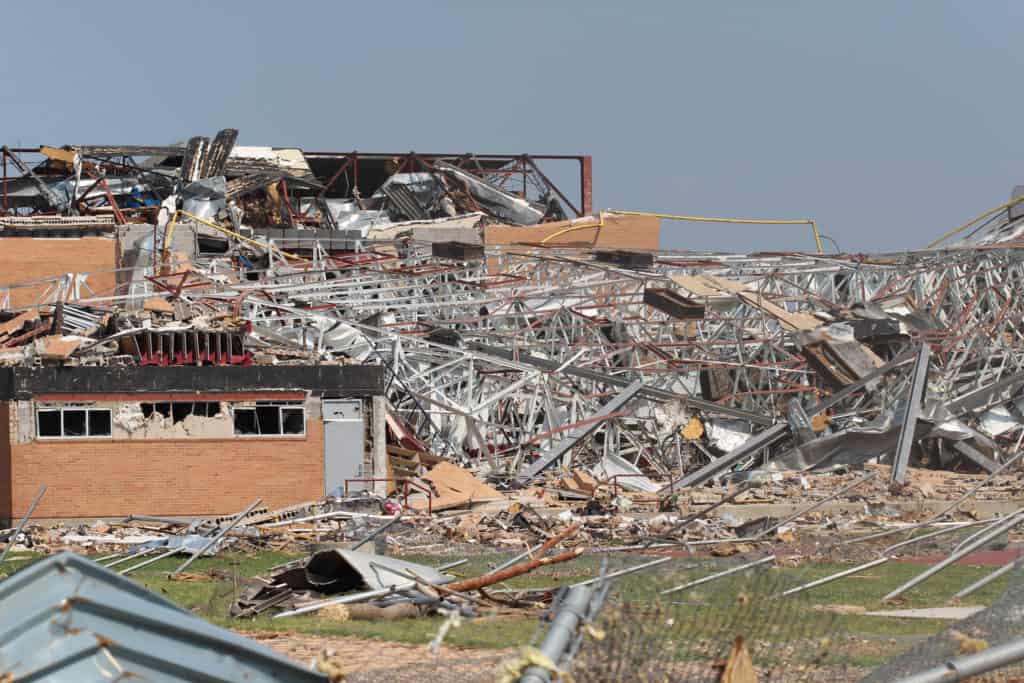When disaster strikes, a fast response is critical. Your business needs an experienced disaster response team that can quickly assess the damage and initiate a multi-faceted recovery plan. Rely on Hull’s Environmental Services to mitigate the damage, while taking necessary steps to preserve human life and the surrounding environment.
A natural disaster can be unpredictable and devastating. Hull’s Environmental Services has over 35 years of experience in emergency response services and environmental remediation services for industries ranging from oil & gas to transportation and utilities. Our locations in Florida, Georgia, Oklahoma, Tennessee, and Texas enable us to quickly respond and put an emergency recovery plan into action.
What Damages Can Natural Disasters Cause?
A natural disaster is a type of weather-driven event that is extreme and sudden. They often strike without warning, resulting in human casualties and property damage. Containment precautions may fail during the event, and utility services may be difficult to restore. Environmental damage can occur if hazardous elements are released.
In areas throughout the southeast and south central United States where Hull’s Environmental Services operates, most natural disasters come in the form of hurricanes, windstorms, floods, and tornadoes. Because damage can be so extensive, it is imperative to have a working relationship in place with a company that understands your business and can provide immediate disaster recovery services.
- Hurricanes. Hurricanes are dangerous and can cause major, widespread damage. The initial devastation caused by extreme winds and heavy rains is often compounded by a storm surge, rip currents, and dangerous flooding. Buildings can be torn apart by wind, equipment can be overturned, and flooding can overwhelm any containment systems.
- Tropical Storms. Tropical storms are similar to hurricanes but typically have sustained winds of less than 73 miles per hour. Wind damage is usually less severe, but water damage can be quite intense as the storm pulls moisture from warm tropical waters. A tropical storm may cause more damage from mud, mold, and mildew to sensitive equipment. Plans should be in place for groundwater, surface water, and soil to minimize the spread of contamination.
- Tornadoes. A tornado is recognized by its dark, funnel-shaped cloud structure. This consists of violently rotating winds that can reach speeds as high as 300 miles per hour. They may tear roofs off buildings, destroy equipment, and jumble vehicles. Oil wells, pipelines, and storage tanks can be particularly susceptible to tornado damage.
- Flooding. Flooding may occur from a storm surge, hurricane damage, broken levees, or waterways that overflow their banks. Vulnerable equipment should be moved to higher locations, and plans should be in place to safely pump water out of structures.
Disaster Response and Recovery Services
Hull’s Environmental Services has extensive experience in emergency natural disaster response and recovery. Whether it’s a hurricane, tornado, flooding, or other event, we have the equipment and experience to provide immediate support. Our response and recovery services include:
- Transformer spill response and cleanup
- Underground utility vault decontamination
- Transformer recovery and staging
- Vacuum excavation/soft digging
- Hazardous/non-hazardous waste transportation and disposal
- Liquids and solids vacuum truck and tanker services
- Fuel and water delivery
- Debris clearing
- High volume/low volume pumping
Our teams have responded to and conducted cleanup and recovery for numerous natural disasters for federal, state, and local government entities, as well as private companies. We have completed extensive response and recovery services in response to damage caused by Hurricane Michael in 2018, Hurricane Florence in 2018, Hurricane Irma in 2017, and Hurricane Matthew in 2016, as well as flash flooding and tornadoes in central Alabama.
To learn more about our disaster recovery and response services, contact us today.









